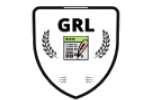PUBLICATION ETHICS
Following all the guidelines for ethical publishing keeps the scientific community growing forever. GRL Journals adhere to the notion of ethical practice. Therefore, we always try to stop the abuse of scientific research works.
Here are some of the guidelines written for the authors.
DATA MANIPULATION, /FABRICATION/FALSIFICATION
Data manipulation, fabrication, and falsification are some of the terms that are common to make it clear how the content of the research works is manipulated. It can be done in the text, images or other relevant documents and shreds of evidence. It is an unethical practice to fabricate the facts, theories, and results in journal publication.
To achieve the illusion in the graphics, some parts of the images are cropped and altered so that the copyright can be infringed.
Thereafter, an attempt is made to reproduce the visual information of scientific knowledge with different or personal identity. GRL journals don’t approve of any such practice. Therefore, any change in the pictures or text made by the author should be informed in the covered letter at the time of submission.
AUTHORSHIP CONFLICT
There can be a conflict of authorship for the article. It occurs owing to various reasons. Some of the common reasons are the dual-authorship, multi-authorship, corresponding author and group authorship. Any conflict of authorship can arise at any time either before or during the process of submission of the article. It is the sole and collective responsibility of the authors to take it as their obligation to resolve it. The journal editor cannot be held responsible for any type of mediation or participation to resolve the conflict. It is not the role of an editor to determine who qualifies or not for the authorship. Therefore a signed statement from all the authors is requested for the listed authors.
TRANSPARENCY
Transparency is an important part of the journal publication which generally remains behind the door. The rapport among the authors, peer reviewers and editor-in-chief makes the task of publishing a smooth sailing. Explicit disclosure of the findings from the peer reviews and actions taken on those reports by the editor makes it easy to remove conflicts. This process of thoroughly analyzing the reports helps the author and the publisher to publish an effective report on a scientific subject. It often includes disclosing the identity of the peers, their history of peer-reviews and the team involved in the process of writing a journal.
PLAGIARISM
Plagiarism can be defined as presenting someone other’s works with different or personal authorship. It is the commonest of all the other malpractices in the journal publication. The authors intentionally or unintentionally try to copy the researches from the other authors and thereafter republish them again with their name and credentials. (any name you prefer to mention Xxxxxxxxxx ) has a list of various kinds of plagiarism that can be found on (web name ). The GRL journals adhere to the guidelines of the COPE (Committee on Publication Ethics) and therefore, never promotes the plagiarism in its journals.
DUPLICATION TEXT/FIGURE
GRL journals object the exercise of duplication of the text as well as figures in any form. It is well recommended before the time of submission of the research papers. The authors are required to inform them before the submission of manuscripts with sufficient documents. The right to reject or accept the manuscripts completely lies with the editor-in-chief.
